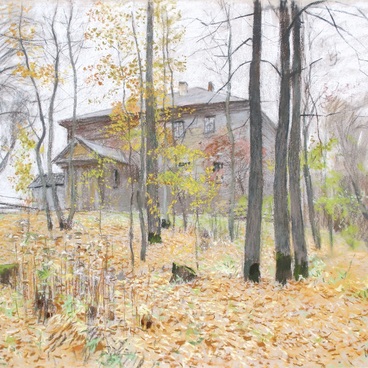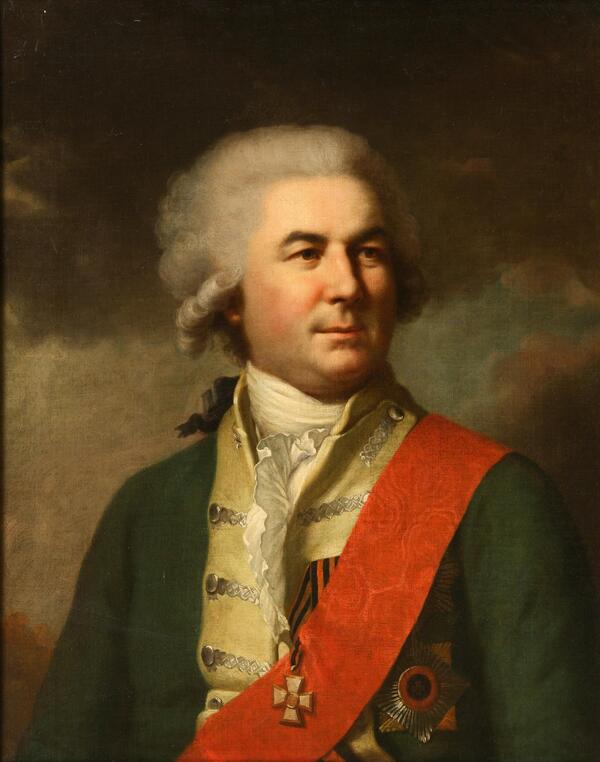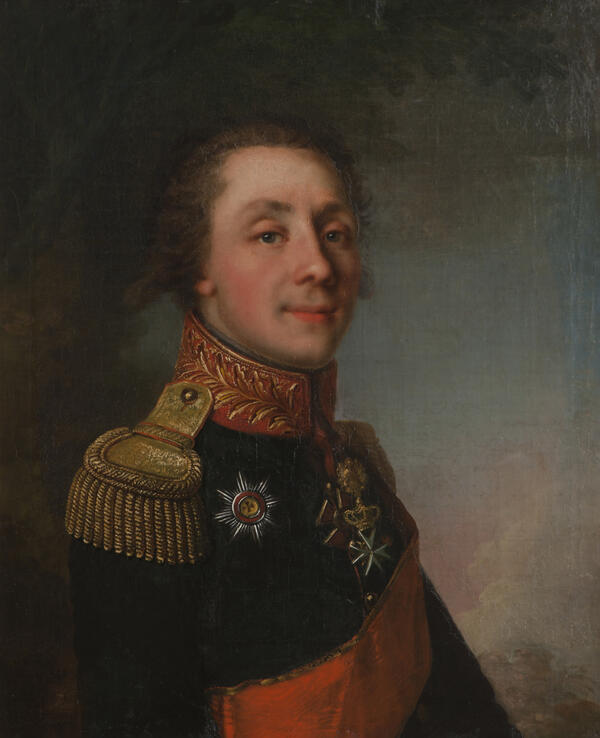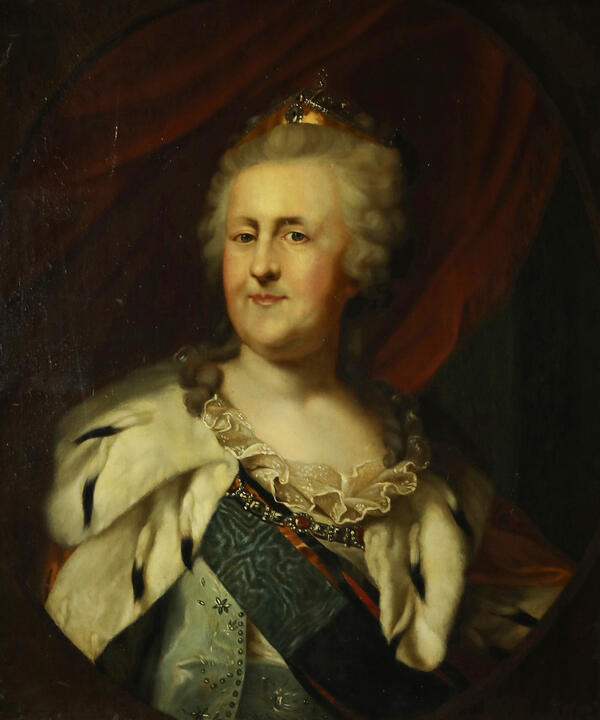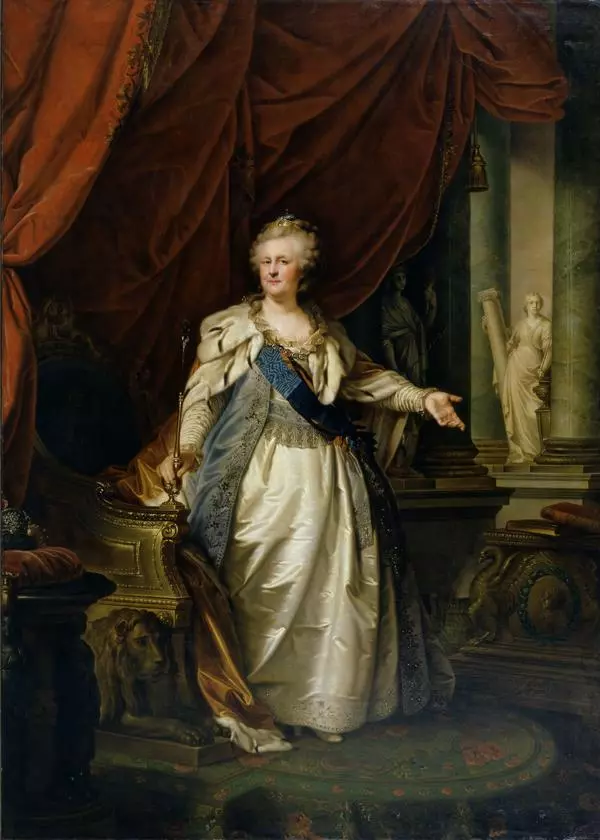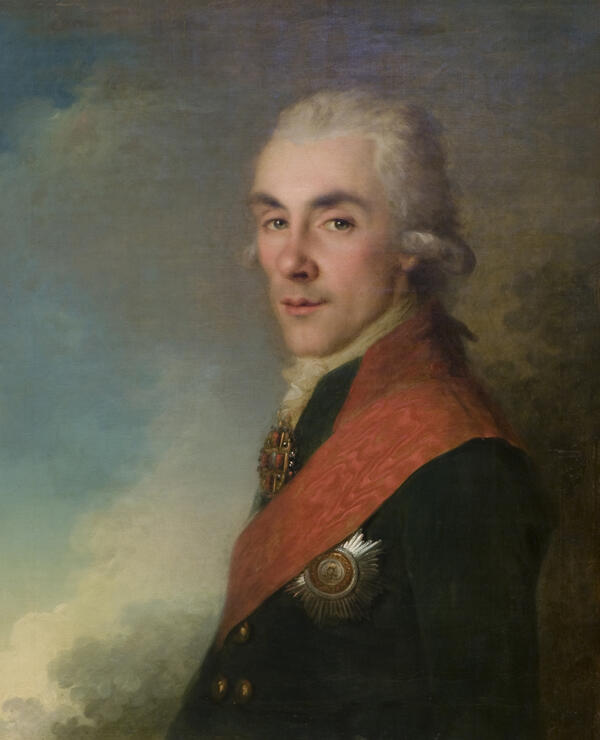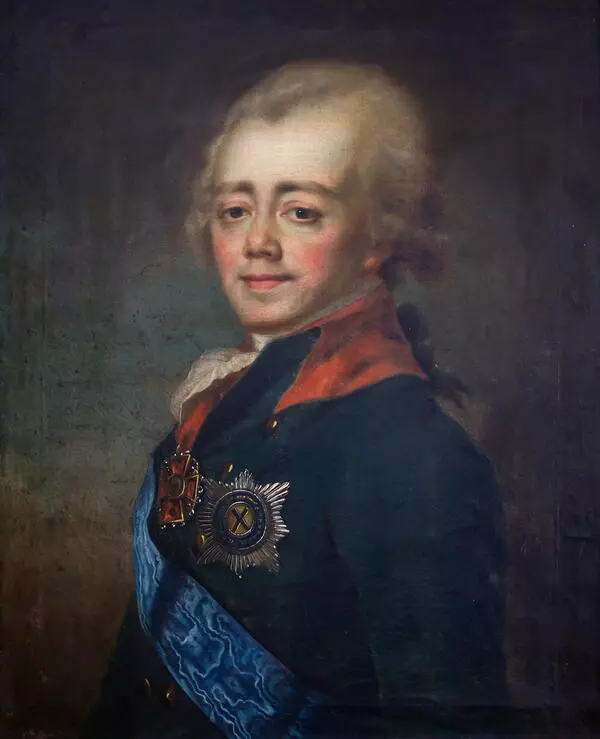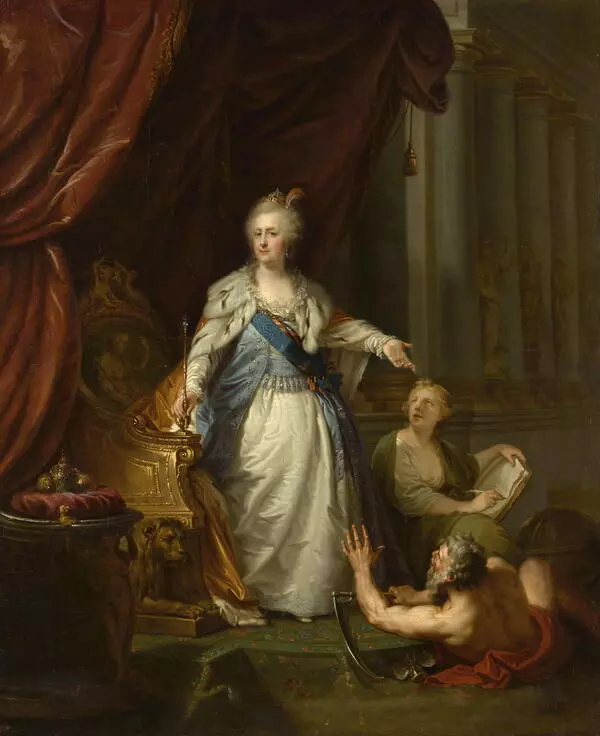In 1927, the portrait of the Yusupov family collection was transferred to the Omsk Museum from State Museum Collection. This painting occupies an important place in the presentation of Russian art of the 18th - early 19th centuries and belongs to the phenomenon in Russian culture known as ‘rossika’. This term is used by art critics to characterize 18th century paintings by foreign artists who worked in Russia.
Austrian painter Johann Baptist Lampi the Elder was one of the best specialists of the ceremonial portrait of his time. His carrier grew rapidly. At just 22, he became a member of the Verona Academy of Arts and gained popularity an excellent portrait painter. In January 1792, the Russian Empress Catherine II invited Lampi to Saint Petersburg, where he lived for five years.
In 1793, Lampi painted a full-length portrait of Catherine II, which is now a part of the State Hermitage Museum collection. During the preparatory period, Lampi created several sketches. One of them is in the Omsk Museum collection. This portrait repeats exactly the image of the empress from the large canvas. The posture, accessories and costume are similar. The artist depicts Catherine the Great in a silk dress, an ermine robe, fastened with a diamond lock. Her hairstyle is decorated with a small crown and a diadem.
Lampi’ s paintings are intense, but gentle and mute. His style is characterized by a smooth brushstroke that softens black and white gradations. The artist managed to effectively set the scene, avoiding significant changes. The portrait is an example of the “delicate” style of the Austrian painter. Looking at the painting, it is difficult to believe that the depicted woman is more than sixty years old.
To exalt the models and to present them from the best side, the composition of ceremonial portraits was made from the “low” point of view. The depicted person was presented at their full height with a rich interior background and objects reflecting character’s society state, profession, and hobbies. The portrait of Catherine II from the Omsk Museum collection is an example. The Empress is presented against the background of the palace. The portrait depicts part of the throne, a heavy drapery fabric, and an allegorical figure of the Truth with a mirror, symbolizing the justice of Catherine II. The high status of the character is determined by the attributes: ribbons of the orders, a scepter decorated with the famous Orlov diamond, given to Catherine by nobleman Grigory Orlov. The portrait of Catherine II in the Hermitage explains the gesture of her left hand. She points to a bas-relief with a portrait of Peter I, and the books above it. Probably, this is the Code of Laws elaborated by the emperor. The entire allegorical composition is designed to emphasize that Catherine is a direct successor to the legacy of Peter the Great.


